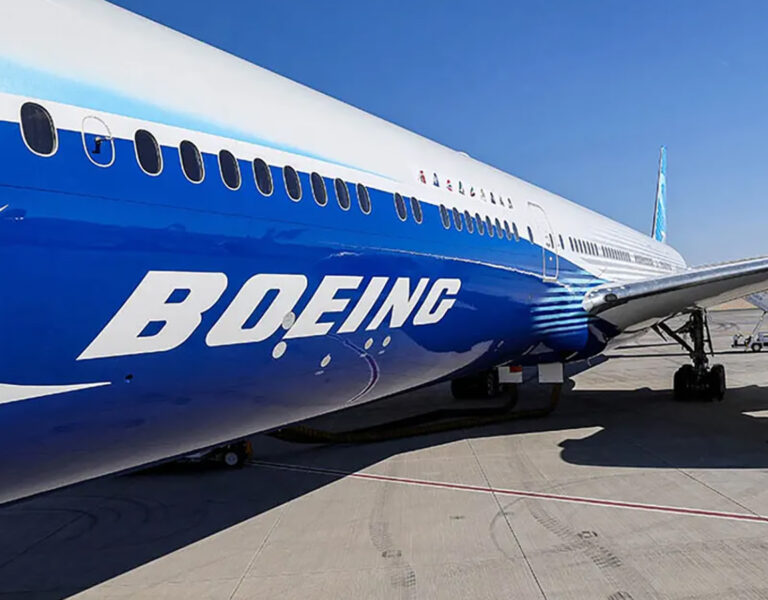Boeing, Starbucks, and Nike are navigating critical transitions. Explore how they can revive their core strengths to overcome challenges and achieve lasting success.
Right now, three of the world’s most admired companies find themselves in important moments of transition. Boeing, Nike, and Starbucks are truly great companies that have lost their way. And having been punished by the markets, all three have turned to new CEOs in search of revival.
The advice from pundits for all three companies seems to be the same: the new leaders need to get these companies back to what made them great. That seems like sound advice. It’s also incredibly hard to do.
Believe it or not, most large companies don’t actually have a precise understanding of what makes them great. Whether they call them their superpowers, their right to win, or their core competencies, most leaders lack a concise and accurate understanding of their organization’s unique capabilities. Leaders will say they know their organizations’ strengths, but they struggle when asked to write them down in a short list. Too many rely on company folklore, advertising slogans, or nostalgia. And without clear insight into their own strengths, companies start to stray for what seem like good business reasons. And that makes getting back to greatness all that much harder.
Each of these three companies is particularly great at something. Boeing excels at reliable execution. Starbucks builds deep relationships. And Nike wins through innovation.
And yet, over the last ten years, each of these companies tried to get good at something else. To improve profits, Boeing tried to depend on partner relationships. To drive traffic, Starbucks went overboard on innovation. And to improve performance, Nike focused on execution. The results speak for themselves.
Boeing: Outsourcing Degraded Execution
Boeing’s strengths lie in reliability and execution. These strengths then disaggregate into a number of more specific capabilities that other companies don’t have. Boeing isn’t the most nimble or customer-centric organization, but it’s highly reliable. It measures twice and cuts once.
Or at least it used to.
Starting over a decade ago, the company decided to make changes that were more about financial engineering than aerospace engineering. It outsourced swaths of its production needs to an ecosystem of external suppliers. The idea was that Boeing could spin off less profitable parts of its operations and then work with those entities as partners. It was a well-worn, Wall Street-approved playbook to cut costs and boost profits.
Of course, managing relationships with an extended network of partners isn’t something that Boeing is great at. The move directly undercut Boeing’s main strength—its rigorous in-house control over every aspect of manufacturing. Years later, Boeing has seen two fatal accidents and multiple high-profile mechanical mishaps. The company’s reputation—and its share price—lies in tatters.
Starbucks: Innovation Eroded Relationships
Starbucks isn’t about the coffee. It’s about the care that the company fosters between its baristas and its customers. Starbucks offers people a “third place” to spend time in that isn’t their home or their work. That dynamic unraveled during the pandemic as lockdowns kept everyone at home. Starbucks’ response to the post-pandemic opening was to try and drive more traffic to its stores and focus on product innovation.
The result has been an ever-expanding menu of novelty items, such as olive-oil-infused coffee. By some estimates, customers now have 170,000 ways to customize their beverages. But this drive for innovation has undermined its core strengths: the stores are noisier, the wait times are longer, and overstretched baristas have no time to connect with customers.
Nike: Performance Stifled Innovation
Nike is one of the most creative companies on the planet. The company creates amazing new products for the world’s greatest athletes, and then shares those innovations with you and me. And it does so through marketing and merchandising campaigns that make us sit up and take notice.
But innovation is messy. And it’s far from efficient. So CEO John Donahoe, a transplant from eBay, went on a drive to improve its margins and tighten up execution. Rather than coming up with new breakthroughs, Nike doubled down on selling versions of its most famous sneakers, like the Air Jordan 1 and the Dunk. As uninspiring versions of old classics saturated the market, Nike lost its cool factor among “sneakerheads” and gave up market share to upstart brands like Hoka.
Figuring Out What’s Right For You
How does this happen? Boeing, Starbucks, and Nike are all great companies led by very smart people. Moreover, the intentions behind these moves were right on. Boeing did need to reduce costs. Starbucks did need to find ways to drive traffic. And Nike did need to improve its execution.
But these challenges should have been solved in ways that built on the company’s strengths rather than detracting from them. A big part of being great is knowing what you can’t do well as much as knowing what you can.
Without that understanding, leaders can get seduced by the generic advice of outside consultants. Or worse, they try applying the same playbook that worked in their last company. That’s a little like having a stomachache and solving it by rummaging blindly through your neighbor’s medicine cabinet. The pills you find probably won’t be the right cure for you. They might even make you sick.
Revival Over Reinvention
Times change, and companies need to evolve. But successful returns to greatness are nearly always built on reviving company cultures rather than reinventing them. Every company has their good days and their bad days. Success comes from having your best days every day.
Satya Nadella didn’t return Microsoft to greatness by making it more like Google. He did it by making it more like Microsoft—a company whose excellence lies in nurturing strong customer relations in B2B technology environments. He recognized that a company’s greatness is found in what it knows how to do better than others.
Likewise, the new CEOs of Boeing, Nike, and Starbucks need to first acknowledge what they don’t know and to keep asking questions until they truly understand what makes their companies great and how they’ve strayed. It’s an encouraging sign, for example, that new Starbucks CEO Brian Niccol announced he was suspending financial guidance for 2025 to allow him time to assess the business. And Kelly Ortberg, the new Boeing CEO, has decided to live in Seattle where the planes get built, not in Chicago, where the headquarters was moved.
Boeing probably does need to bring much of its production back in-house, while Nike should probably kick-start its innovation engine. Those kinds of shifts will no doubt damage the bottom line in the short term. Investors might not want to hear that. But their greatness didn’t come easy in the first place, and neither will winning it back.

 Dev Patnaik
Dev Patnaik


